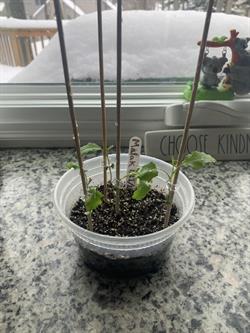 With face-to-face instruction minimized because of COVID-19, the lab element of science classes has been among the most challenging to reproduce for students. Fortunately, Schoolcraft College professors and instructors continue to find a way forward to deliver an excellent learning experience.
With face-to-face instruction minimized because of COVID-19, the lab element of science classes has been among the most challenging to reproduce for students. Fortunately, Schoolcraft College professors and instructors continue to find a way forward to deliver an excellent learning experience.
The latest example comes from Biology 120/130 courses taught by Professor Michael W. Orick.
“With a limited ability to provide students with actual hands-on lab experience during the pandemic, faculty and lab staff brainstormed a way to provide Biology 120 students (Principles of Biology 1) with the equipment and supplies needed to conduct their 10-week ‘Genetic Crossing’ experiment at home during the Winter 2021 semester,” Orick said.
The lab staff, led by Melissa Gury, collected and packaged the equipment and supplies needed to perform the experiment, including seeds, fertilizer, soil, stakes, labels, petri dish and filter paper. The lab packs then were sent to the bookstore, placed on the website and shipped to students after they were purchased.
“As far as we know, this is the first time in the history of the Biology Department that a lab activity from a traditional on-campus course has been performed at home by all students in all sections,” Orick said. “Necessity truly is the mother of invention!”
This particular experiment begins with students growing their first-generation (F1) “Fast Plants” from seed in Week 1. Over the next three to four weeks, students tend to the F1 plants, performing several tasks as the plants mature (flower).
Students then cross-pollinate their F1 plants, and eventually collect the seeds, which represent the F2 generation. The F2 seeds are then germinated, and their genetic traits (phenotypes) are recorded and statistically analyzed.
Each week, instructors do a live lab recitation during which they demonstrate how to perform the various scheduled tasks, such as planting, thinning, staking, etc. Students are required to submit a “photo journal” that documents their completion of these tasks.
During the lab recitation on Zoom, Orick interacts with the students, demonstrating what to look for in their plants and fostering a dialogue with them.
“The trickiest part, which we anticipated, was having students select an area at home that provided enough light for the plants to grow,” Orick said. “We normally grow the plants in our greenhouse on campus. So far, it looks like most were able to find a spot, or provide artificial light via a lamp.”